-
 Bitcoin
Bitcoin $75,841.3824
-5.52% -
 Ethereum
Ethereum $1,435.8984
-9.94% -
 Tether USDt
Tether USDt $0.9992
-0.04% -
 XRP
XRP $1.7847
-6.94% -
 BNB
BNB $546.9773
-2.40% -
 USDC
USDC $1.0000
0.01% -
 Solana
Solana $104.1793
-6.67% -
 TRON
TRON $0.2284
-1.27% -
 Dogecoin
Dogecoin $0.1412
-7.20% -
 Cardano
Cardano $0.5573
-6.85% -
 UNUS SED LEO
UNUS SED LEO $9.1646
1.87% -
 Toncoin
Toncoin $2.9893
-4.98% -
 Chainlink
Chainlink $10.8554
-7.54% -
 Stellar
Stellar $0.2211
-6.16% -
 Avalanche
Avalanche $16.1953
-5.29% -
 Shiba Inu
Shiba Inu $0.0...01068
-8.16% -
 Sui
Sui $1.9277
-7.24% -
 Hedera
Hedera $0.1463
-3.93% -
 MANTRA
MANTRA $6.2455
-1.78% -
 Dai
Dai $0.9999
-0.02% -
 Bitcoin Cash
Bitcoin Cash $269.8402
-4.07% -
 Polkadot
Polkadot $3.4105
-7.39% -
 Litecoin
Litecoin $69.4248
-3.71% -
 Ethena USDe
Ethena USDe $0.9986
-0.04% -
 Bitget Token
Bitget Token $4.0854
-3.94% -
 Hyperliquid
Hyperliquid $11.9030
-4.97% -
 Pi
Pi $0.5581
-4.89% -
 Monero
Monero $195.5787
-5.87% -
 OKB
OKB $50.0564
-2.43% -
 Uniswap
Uniswap $4.7289
-10.11%
How to buy LTC coins on Electrum wallet
To buy Litecoin with Electrum, download Electrum-LTC, set up a wallet with a secure seed phrase, purchase LTC on an exchange, and transfer it to your wallet's address.
Apr 04, 2025 at 09:14 pm
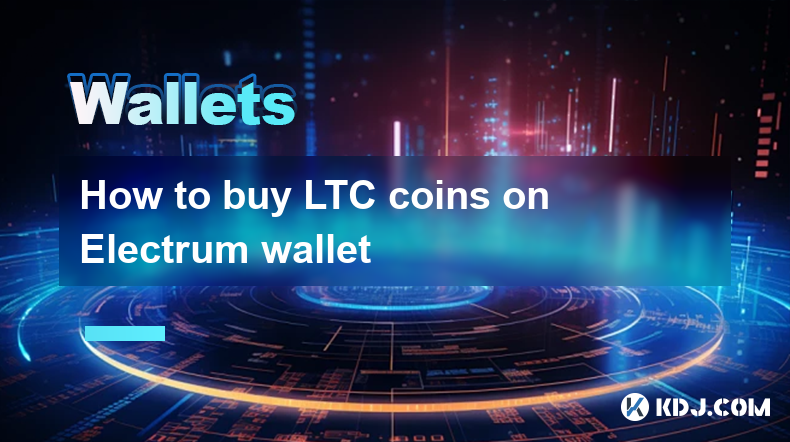
Buying Litecoin (LTC) using the Electrum wallet involves a few steps that you need to follow carefully. Electrum is primarily known as a Bitcoin wallet, but it can be adapted for other cryptocurrencies like Litecoin through the use of a forked version specifically designed for LTC. Before you begin, make sure you have the Electrum-LTC wallet installed on your computer. This wallet is specifically designed for Litecoin and can be downloaded from the official Litecoin website or GitHub. Once you have the wallet set up, you'll need to acquire LTC from an exchange or another source before you can store it in your Electrum-LTC wallet.
To start, you will need to create a new wallet in Electrum-LTC. This involves generating a seed phrase, which is crucial for accessing your wallet. Keep this seed phrase safe and secure, as it is the only way to recover your wallet if you lose access. After setting up your wallet, you'll need to obtain Litecoin. You can buy LTC from various cryptocurrency exchanges like Coinbase, Binance, or Kraken. Once you have purchased LTC, you can transfer it to your Electrum-LTC wallet using the receiving address provided by the wallet.
Setting Up Electrum-LTC Wallet
To set up the Electrum-LTC wallet, follow these steps:
- Download the Electrum-LTC software from the official Litecoin website or GitHub.
- Install the software on your computer.
- Launch the Electrum-LTC application and choose to create a new wallet.
- Select the type of wallet you want to create. For most users, the "Standard wallet" option is sufficient.
- Choose a location to store your wallet file and set a strong password.
- Generate a seed phrase and write it down carefully. This seed phrase is essential for wallet recovery.
- Confirm the seed phrase as prompted by the software to ensure you have recorded it correctly.
- Once your wallet is set up, you will see your Litecoin address, which you can use to receive LTC.
Buying Litecoin from an Exchange
To buy Litecoin, you will need to sign up for an account on a cryptocurrency exchange. Here are the steps to follow:
- Choose a reputable exchange like Coinbase, Binance, or Kraken.
- Sign up for an account and complete the necessary verification processes.
- Deposit funds into your exchange account using a bank transfer, credit card, or other supported payment methods.
- Navigate to the trading section of the exchange and select the LTC trading pair (e.g., LTC/USD or LTC/BTC).
- Place an order to buy Litecoin at the current market price or set a limit order if you want to buy at a specific price.
- Once your order is filled, you will see the Litecoin in your exchange wallet.
Transferring Litecoin to Electrum-LTC Wallet
After purchasing Litecoin on an exchange, you need to transfer it to your Electrum-LTC wallet. Here's how to do it:
- Open your Electrum-LTC wallet and go to the "Receive" tab.
- Copy the Litecoin address displayed in the wallet.
- Go back to the exchange and navigate to the withdrawal section.
- Enter the Litecoin address you copied from your Electrum-LTC wallet.
- Specify the amount of Litecoin you want to withdraw and confirm the transaction.
- Wait for the transaction to be processed and confirmed on the Litecoin blockchain. This may take a few minutes to an hour, depending on network congestion.
Security Measures for Electrum-LTC Wallet
Securing your Electrum-LTC wallet is crucial to protect your Litecoin. Here are some security measures to consider:
- Always keep your seed phrase safe and secure. Store it in a secure location, such as a safe or a secure note-taking app.
- Use a strong password for your wallet and change it regularly.
- Enable two-factor authentication (2FA) if available in your Electrum-LTC wallet settings.
- Keep your wallet software updated to the latest version to protect against known vulnerabilities.
- Be cautious of phishing attempts. Always download software from official sources and verify the authenticity of any communication you receive.
Troubleshooting Common Issues
When using Electrum-LTC, you might encounter some common issues. Here are some troubleshooting tips:
- Transaction not confirming: If your transaction is taking longer than expected to confirm, check the Litecoin network's current congestion level. You can also consider increasing the transaction fee to expedite the process.
- Wallet not syncing: Ensure your internet connection is stable. If the problem persists, try restarting the wallet or reinstalling the software.
- Forgotten password: If you forget your wallet password, you can use your seed phrase to restore your wallet. However, you will need to set a new password.
Additional Tips for Managing Litecoin
Managing your Litecoin effectively involves more than just buying and storing it. Here are some additional tips:
- Diversify your investments: Don't put all your funds into Litecoin. Consider diversifying your cryptocurrency portfolio to mitigate risk.
- Stay informed: Keep up with Litecoin news and developments. Understanding market trends and technological updates can help you make informed decisions.
- Use hardware wallets for large amounts: If you plan to hold a significant amount of Litecoin, consider using a hardware wallet like Ledger or Trezor for added security.
- Regularly back up your wallet: Make sure to back up your Electrum-LTC wallet regularly to prevent loss of funds in case of hardware failure or other issues.
Common Questions and Answers
Q: Can I use the regular Electrum wallet to store Litecoin?
A: No, the regular Electrum wallet is designed for Bitcoin. To store Litecoin, you need to use the Electrum-LTC wallet, which is a forked version specifically designed for Litecoin.
Q: How long does it take to transfer Litecoin from an exchange to Electrum-LTC?
A: The transfer time can vary depending on the Litecoin network's congestion level. Typically, it takes anywhere from a few minutes to an hour for the transaction to be confirmed.
Q: Is it safe to store large amounts of Litecoin in Electrum-LTC?
A: While Electrum-LTC is secure, it is recommended to use a hardware wallet for storing large amounts of Litecoin to enhance security. Hardware wallets provide an additional layer of protection against online threats.
Q: What should I do if I lose my seed phrase?
A: If you lose your seed phrase, you will not be able to recover your wallet. It is crucial to keep your seed phrase in a safe and secure location. Consider using a secure note-taking app or a physical safe.
Q: Can I buy Litecoin directly through Electrum-LTC?
A: No, Electrum-LTC does not support direct purchases of Litecoin. You need to buy Litecoin from a cryptocurrency exchange and then transfer it to your Electrum-LTC wallet.
Q: How can I increase the security of my Electrum-LTC wallet?
A: To increase the security of your Electrum-LTC wallet, use a strong password, enable two-factor authentication if available, keep your software updated, and store your seed phrase in a secure location. Additionally, consider using a hardware wallet for added security.
Q: What are the fees associated with buying Litecoin on an exchange?
A: Fees vary depending on the exchange you use. Typically, exchanges charge a percentage of the transaction amount as a trading fee, and there may be additional fees for deposits and withdrawals. Always check the fee structure of the exchange before making a purchase.
Q: Can I use Electrum-LTC on my mobile device?
A: Currently, Electrum-LTC is primarily designed for desktop use. There are no official mobile versions available. However, you can use a mobile wallet specifically designed for Litecoin if you need mobile access.
Q: How do I know if my Litecoin transaction has been successful?
A: You can check the status of your Litecoin transaction on a blockchain explorer like BlockCypher or Litecoin Explorer. Enter your transaction ID to see if it has been confirmed on the Litecoin blockchain.
Q: What should I do if I encounter issues with Electrum-LTC?
A: If you encounter issues with Electrum-LTC, first check your internet connection and ensure your software is up to date. If the problem persists, consult the Electrum-LTC documentation or seek help from the Litecoin community forums.
Disclaimer:info@kdj.com
The information provided is not trading advice. kdj.com does not assume any responsibility for any investments made based on the information provided in this article. Cryptocurrencies are highly volatile and it is highly recommended that you invest with caution after thorough research!
If you believe that the content used on this website infringes your copyright, please contact us immediately (info@kdj.com) and we will delete it promptly.
- "Cardano (ADA) Price Could Dip Below $0.60, Following Previous Market Cycle"
- 2025-04-09 05:10:12
- BONK, the well-known meme coin, has risen over 35% in the last week, attracting meme coin investors in the market. So, what caused this rally?
- 2025-04-09 05:10:12
- Bitcoin (BTC) Investors May Not Exactly Feel It, but BTC Has Been a Relatively Good Bet
- 2025-04-09 05:05:12
- Donald's Bitcoin (DONBTC) Could Turn Early Investors into Multi-Millionaires, Like Shiba Inu (SHIB) and Dogecoin (DOGE) Did
- 2025-04-09 05:05:12
- 6 Upcoming Kraken Listings That Could Be the Next Big Thing in Crypto
- 2025-04-09 05:00:13
- COTI Unveils New Privacy-Focused Blockchain to Reshape Web3 Transactions
- 2025-04-09 05:00:13
Related knowledge
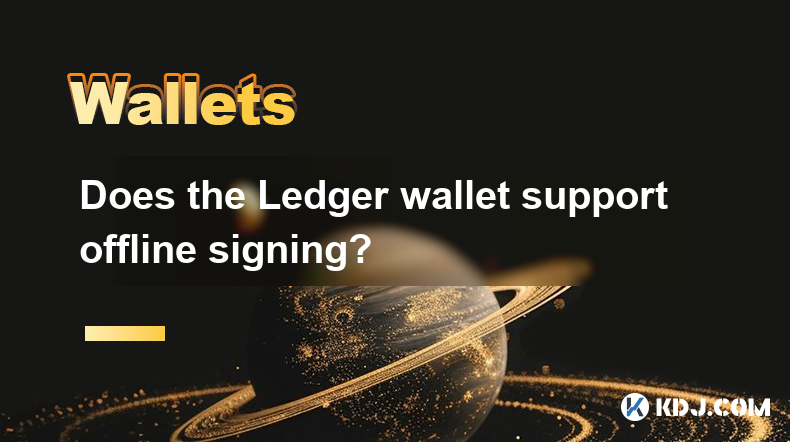
Does the Ledger wallet support offline signing?
Apr 09,2025 at 04:49am
Introduction to Ledger Wallet and Offline SigningThe Ledger wallet is a popular hardware wallet used by cryptocurrency enthusiasts to securely store their digital assets. One of the key features that users often inquire about is offline signing. Offline signing, also known as cold signing, is a security measure that allows users to sign transactions wit...
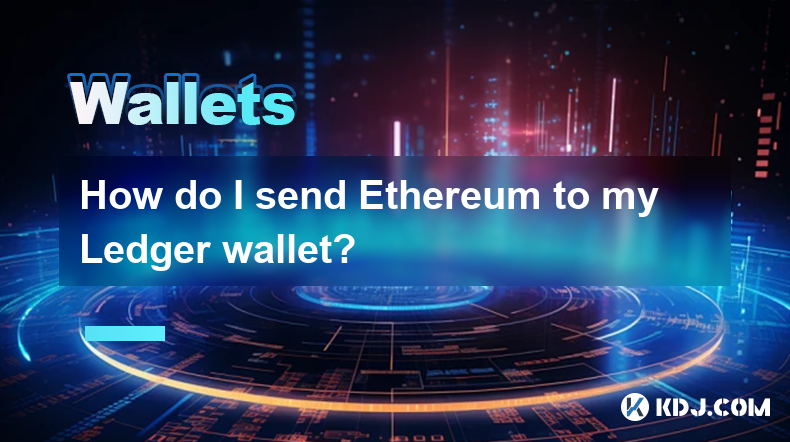
How do I send Ethereum to my Ledger wallet?
Apr 09,2025 at 03:21am
Sending Ethereum to your Ledger wallet involves a few straightforward steps, but it's crucial to follow them carefully to ensure the security of your funds. In this guide, we'll walk you through the process of transferring Ethereum to your Ledger wallet, ensuring that you understand each step and the necessary precautions. Preparing Your Ledger WalletBe...
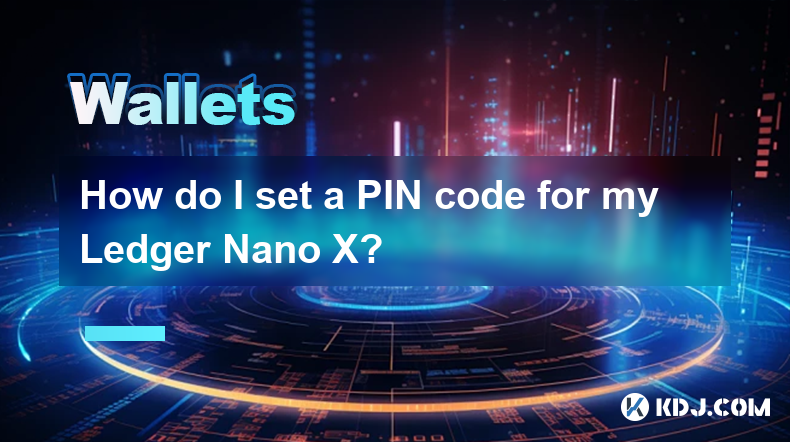
How do I set a PIN code for my Ledger Nano X?
Apr 08,2025 at 11:14pm
Setting a PIN code for your Ledger Nano X is a crucial step in securing your cryptocurrency assets. The PIN code acts as a primary layer of security, ensuring that only you can access your device. In this article, we will guide you through the process of setting up a PIN code on your Ledger Nano X, ensuring that you follow each step meticulously to main...
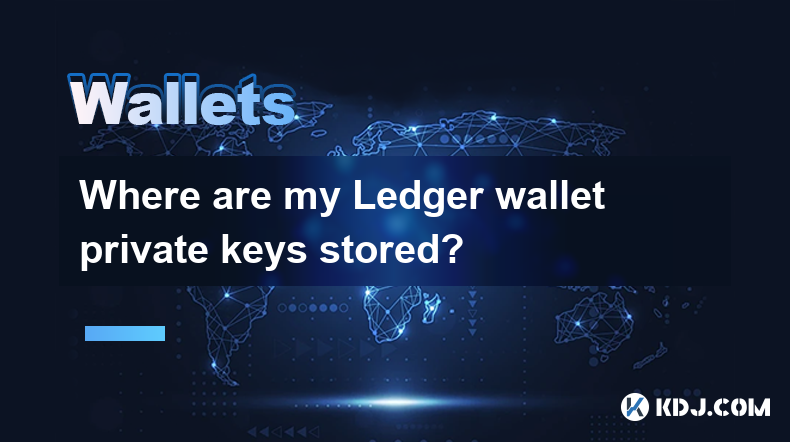
Where are my Ledger wallet private keys stored?
Apr 08,2025 at 10:35pm
When using a Ledger hardware wallet, one of the most critical aspects to understand is the storage and management of your private keys. This article will delve into the specifics of where your Ledger wallet private keys are stored, ensuring you have a comprehensive understanding of their security and accessibility. Understanding Private Keys in Ledger W...
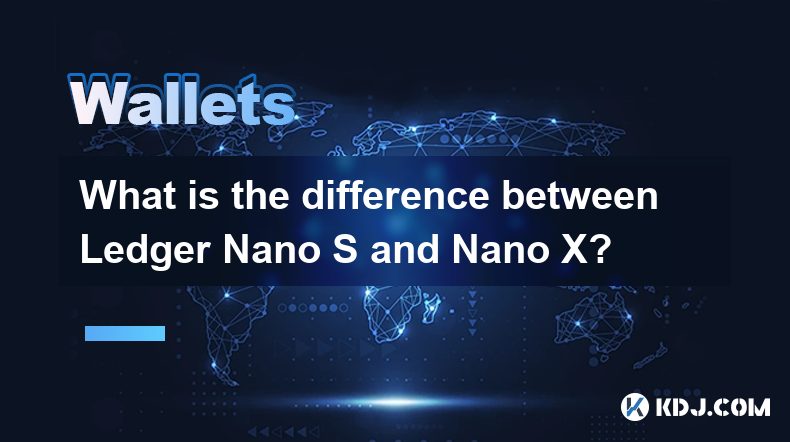
What is the difference between Ledger Nano S and Nano X?
Apr 09,2025 at 12:49am
When it comes to securing your cryptocurrencies, hardware wallets are often recommended as the safest option. Among the most popular hardware wallets are the Ledger Nano S and Ledger Nano X. Both devices are produced by Ledger, a well-known company in the cryptocurrency security industry. This article will delve into the differences between these two de...

How do I enable the Shield Transaction feature on Trezor?
Apr 08,2025 at 10:28pm
Enabling the Shield Transaction feature on Trezor involves a series of steps that allow you to enhance the privacy of your cryptocurrency transactions. This feature is particularly useful for users who want to protect their transaction history from being easily traced on the blockchain. In this article, we will guide you through the process of enabling ...

Does the Ledger wallet support offline signing?
Apr 09,2025 at 04:49am
Introduction to Ledger Wallet and Offline SigningThe Ledger wallet is a popular hardware wallet used by cryptocurrency enthusiasts to securely store their digital assets. One of the key features that users often inquire about is offline signing. Offline signing, also known as cold signing, is a security measure that allows users to sign transactions wit...

How do I send Ethereum to my Ledger wallet?
Apr 09,2025 at 03:21am
Sending Ethereum to your Ledger wallet involves a few straightforward steps, but it's crucial to follow them carefully to ensure the security of your funds. In this guide, we'll walk you through the process of transferring Ethereum to your Ledger wallet, ensuring that you understand each step and the necessary precautions. Preparing Your Ledger WalletBe...

How do I set a PIN code for my Ledger Nano X?
Apr 08,2025 at 11:14pm
Setting a PIN code for your Ledger Nano X is a crucial step in securing your cryptocurrency assets. The PIN code acts as a primary layer of security, ensuring that only you can access your device. In this article, we will guide you through the process of setting up a PIN code on your Ledger Nano X, ensuring that you follow each step meticulously to main...

Where are my Ledger wallet private keys stored?
Apr 08,2025 at 10:35pm
When using a Ledger hardware wallet, one of the most critical aspects to understand is the storage and management of your private keys. This article will delve into the specifics of where your Ledger wallet private keys are stored, ensuring you have a comprehensive understanding of their security and accessibility. Understanding Private Keys in Ledger W...

What is the difference between Ledger Nano S and Nano X?
Apr 09,2025 at 12:49am
When it comes to securing your cryptocurrencies, hardware wallets are often recommended as the safest option. Among the most popular hardware wallets are the Ledger Nano S and Ledger Nano X. Both devices are produced by Ledger, a well-known company in the cryptocurrency security industry. This article will delve into the differences between these two de...

How do I enable the Shield Transaction feature on Trezor?
Apr 08,2025 at 10:28pm
Enabling the Shield Transaction feature on Trezor involves a series of steps that allow you to enhance the privacy of your cryptocurrency transactions. This feature is particularly useful for users who want to protect their transaction history from being easily traced on the blockchain. In this article, we will guide you through the process of enabling ...
See all articles






















































































